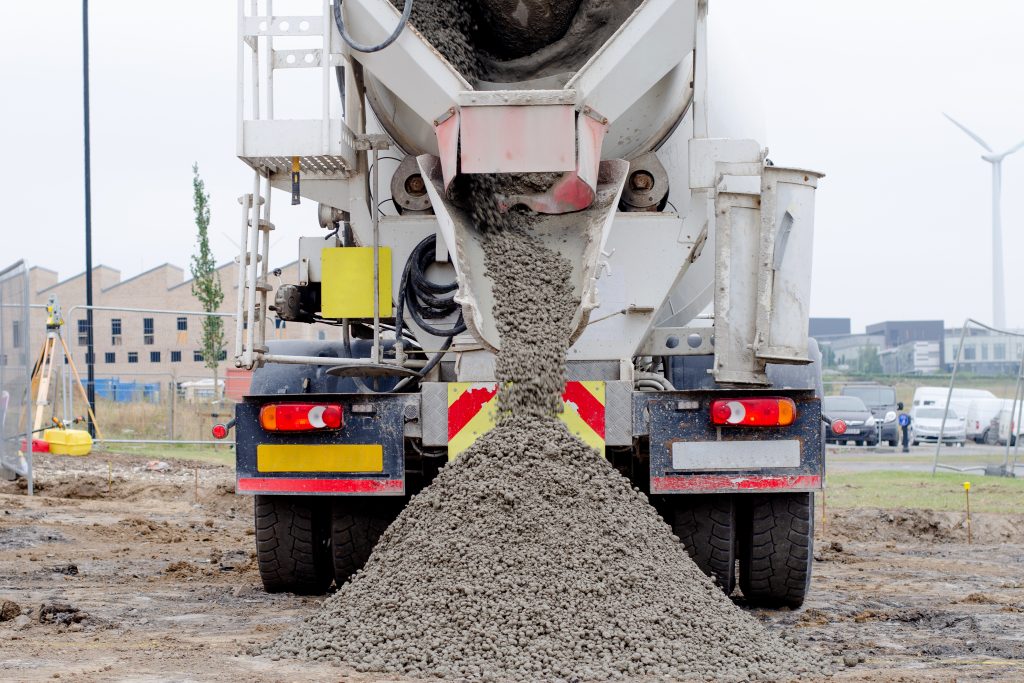A Guide to Testing Concrete Strength: Know How You Can Improve the Concrete’s Strength and Durability

Ready-mix semi-dry concrete delivered on construction site and discharged from the mixing truck
Testing concrete strength is crucial for ensuring the reliability of structures. It helps engineers and construction professionals uphold safety standards in the building’s design. You can test the strength of your concrete mixture with various testing methods. You can also implement ways to strengthen the concrete mixture and improve its durability. You can read about the various concrete strength testing methods below.
What is Strength and Durability in Concrete?
Strength and durability are two important characteristics of concrete. Both determine its ability to withstand various forces and environmental conditions over time.
Strength refers to the concrete’s ability to withstand applied loads or forces without breaking or deforming. It is usually measured in compressive strength (the maximum load a concrete specimen can bear before crushing). For example, higher compressive strength indicates stronger concrete. This makes it suitable for supporting heavy loads in buildings, bridges, and other structures.
Durability, on the other hand, is the concrete’s ability to resist deterioration. It is also how well the concrete can maintain its structural integrity over an extended period. A durable concrete mix includes quality materials, proper curing, and adequate protection against external elements to ensure long-term performance. It can withstand moisture, temperature changes, chemical attacks, and abrasion.
Contact JK Cement now to strengthen your structures and use our construction cost calculator for precise budgeting.
Methods to Test the Strength and Durability of Concrete
Several methods come in handy when testing the strength and durability of concrete. Here’s a list:
Compression Test
The most common method used to test concrete strength is the compression test. Here, cylindrical or cube-shaped specimens are subjected to gradually increasing compressive loads until failure occurs. The maximum load sustained by the specimen determines its compressive strength. This is an essential indicator of concrete quality and suitability for structural use.
Flexural Test
Flexural strength, or modulus of rupture, is measured by subjecting concrete beams or prisms to bending forces. This test evaluates the ability of concrete to withstand bending. It is particularly suitable for applications such as beams, slabs, and pavements.
Splitting Tensile Test
This test evaluates the tensile strength of concrete. Here, a diametrical compressive load is applied to a cylindrical specimen. The tensile strength is calculated based on the maximum tensile stress developed within the specimen. This offers insights into its resistance to cracking and deformation.
Non-Destructive Testing (NDT)
NDT methods provide non-invasive ways of evaluating concrete properties. They do not damage the structure for strength and durability assessment. Examples of such methods include ultrasonic testing, rebound hammer, and electrical resistivity. These are useful for inspecting concrete strength, detecting defects, and monitoring deterioration over time.
Chloride Penetration Test
Durability is often assessed by measuring the concrete’s resistance to chloride ion penetration. This can cause corrosion of reinforcing steel. So, the test involves subjecting concrete specimens to chloride solutions under controlled conditions. Then, the depth of chloride penetration is evaluated.
Abrasion Resistance Test
This test assesses the concrete’s durability against wear and abrasion caused by traffic, footfall, or mechanical forces. Methods such as the ASTM C944 test measure the loss of material from concrete surfaces subjected to abrasive action. It offers valuable information for pavement and flooring applications.
Ways to Improve the Strength and Durability of Concrete Structures
Improving the strength and durability of concrete structures involves specific strategies. They are as follows:
High-Quality Materials:
Using high-quality cement, aggregates, and admixtures is important. It ensures the production of concrete with superior strength and durability.
Proper Mix Design:
Employing an optimised mix design with the correct proportion of materials and water-cement ratio is essential. It improves concrete strength and durability while minimising shrinkage and cracking.
Proper Curing:
Proper curing methods help maintain adequate moisture levels in concrete during the early stages of hydration. These include moist curing or curing compounds. They promote strength development and reduce the risk of cracking.
Reinforcement:
Incorporating steel reinforcement, such as rebar or mesh, enhances the structural integrity. It also improves the load-bearing capacity of concrete structures. This further boosts their durability and resistance to external forces.
Quality Construction Practices:
Ensuring proper placement, consolidation, and compaction of concrete during construction is advisable. It minimises voids and improves the bond between aggregate particles. This results in denser and more durable concrete.
Surface Treatments:
Applying surface treatments, like sealers or coatings, can enhance the concrete’s resistance to moisture penetration, chemical attacks, and abrasion. This can increase its durability and longevity.
Build structures with the confidence and assurance of JK Cement’s strong cement. Explore a vast range of cement for construction and create structures that possess superior quality and durability.
FAQs
What is concrete strength testing?
Concrete strength testing involves assessing the ability of concrete to withstand applied loads or forces without breaking or deforming.
What determines the strength and durability of the concrete?
The strength and durability of concrete are determined by factors like:
-
- The quality of materials used
-
- Proper mix design
-
- Effective curing
-
- Reinforcement
-
- Construction practices
How to improve concrete strength?
To make concrete strong:
-
- Use high-quality materials
-
- Optimise the mix design
-
- Ensure proper curing
-
- Incorporate reinforcement
-
- Follow quality construction practices and maintenance procedures
Are there any non-destructive methods to check the strength of concrete?
Yes, non-destructive methods like ultrasonic testing, rebound hammer, and maturity meter are used to assess concrete strength without damaging the structure. These methods provide insights into the concrete’s quality and performance in construction projects.
What is the significance of assessing the durability of concrete?
Assessing the durability of concrete is crucial because it ensures the concrete’s ability to withstand environmental factors. These include moisture, temperature changes, chemical attacks, and abrasion over time. Such an assessment fosters long-term structural integrity.